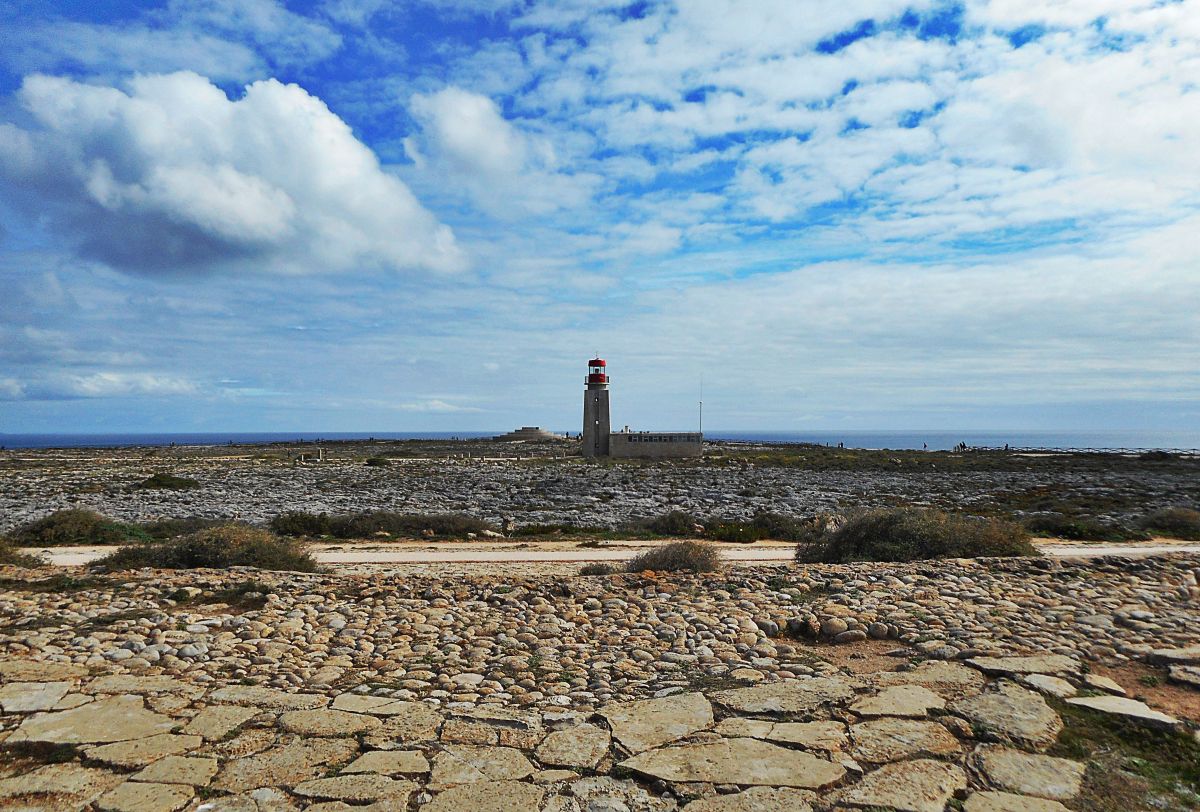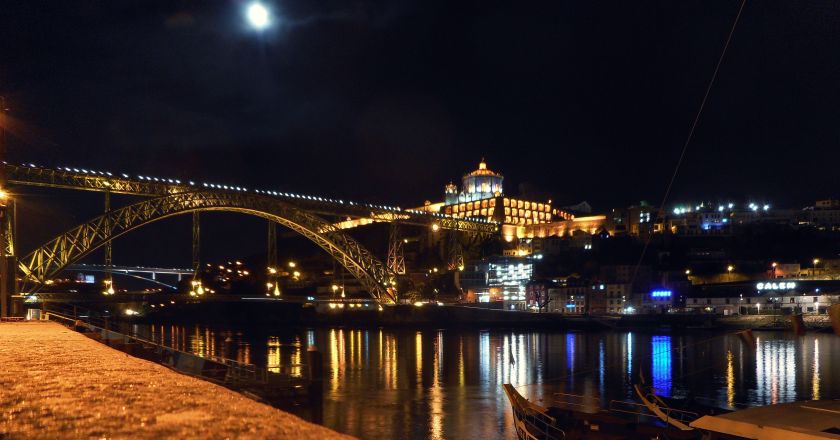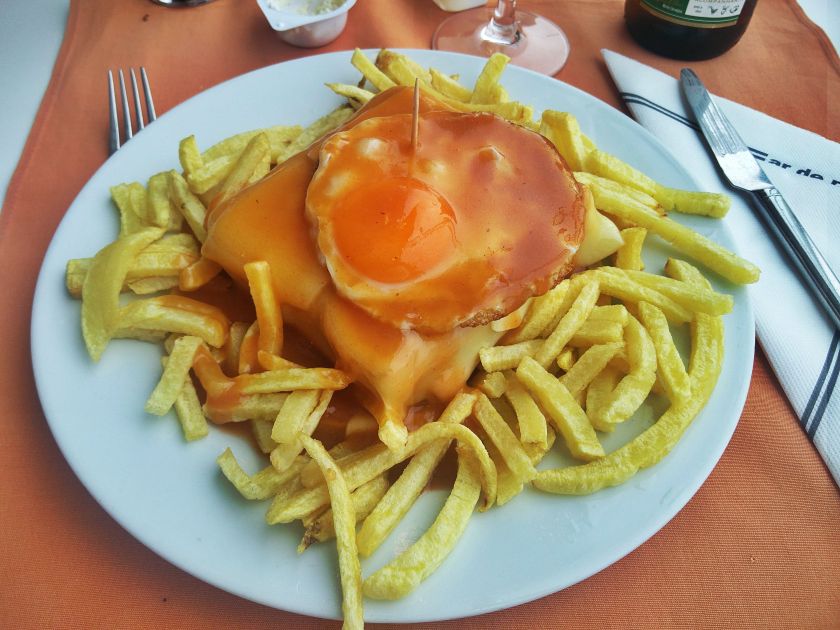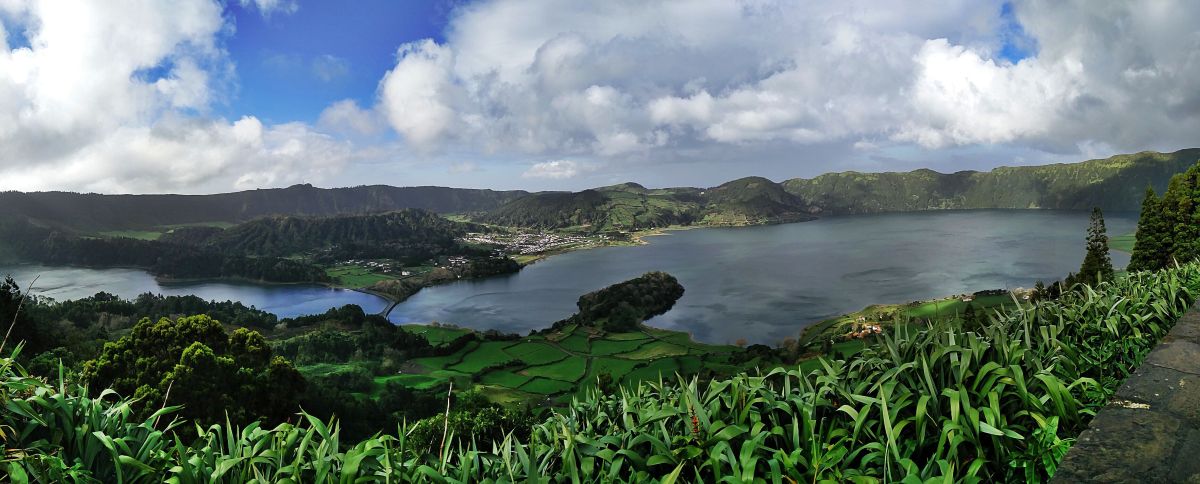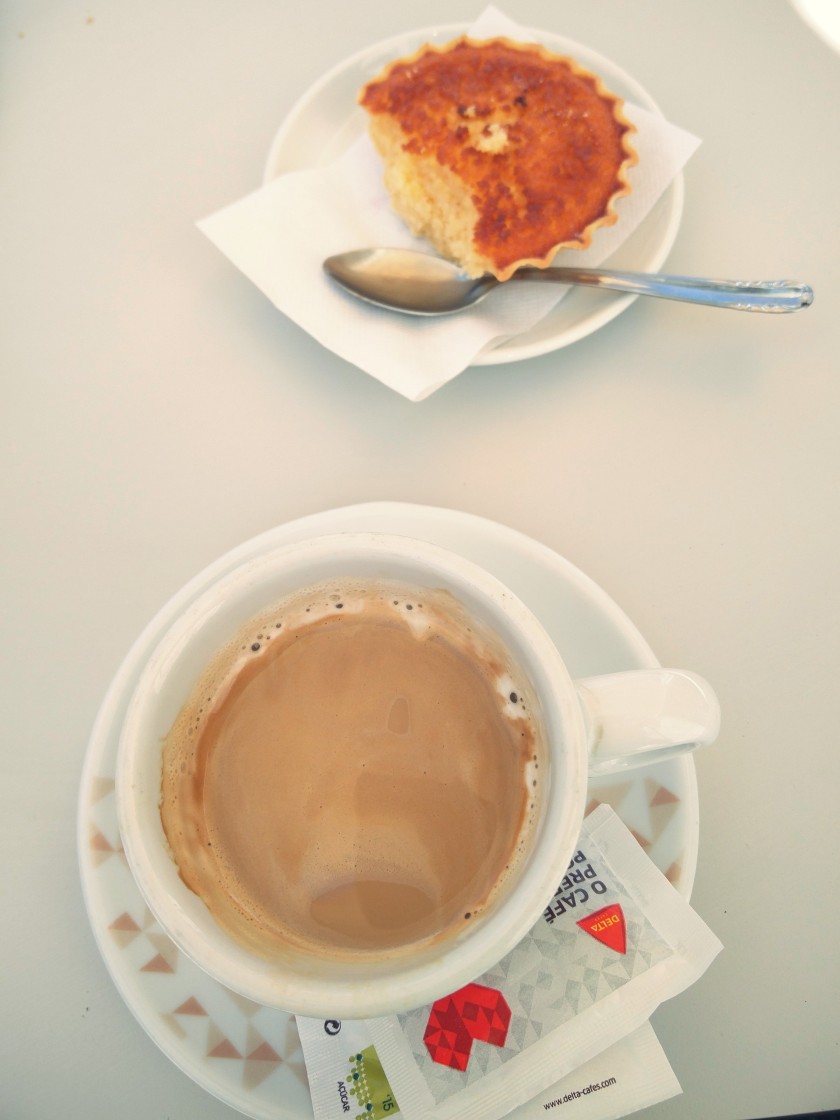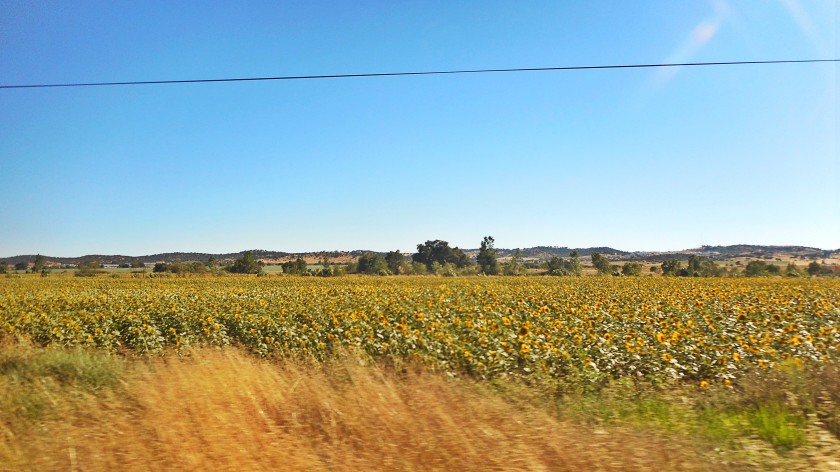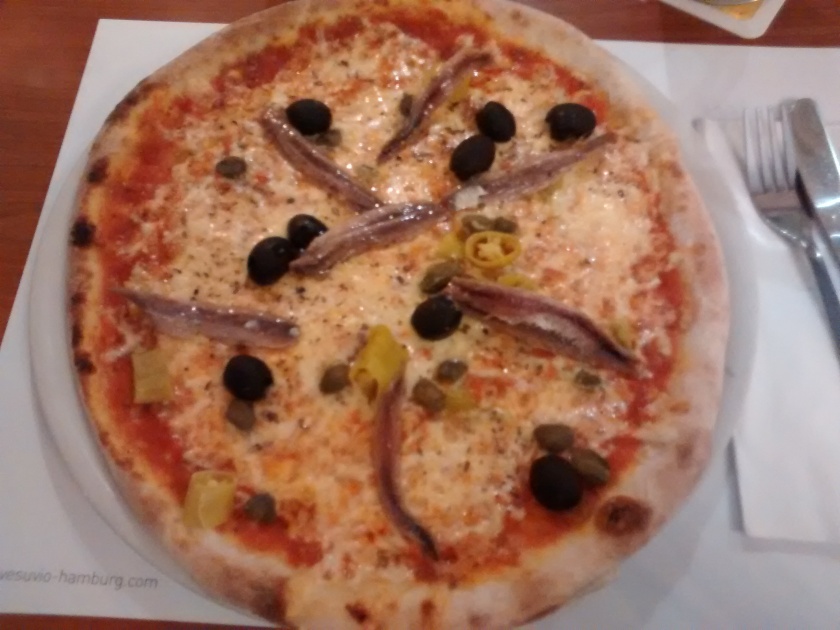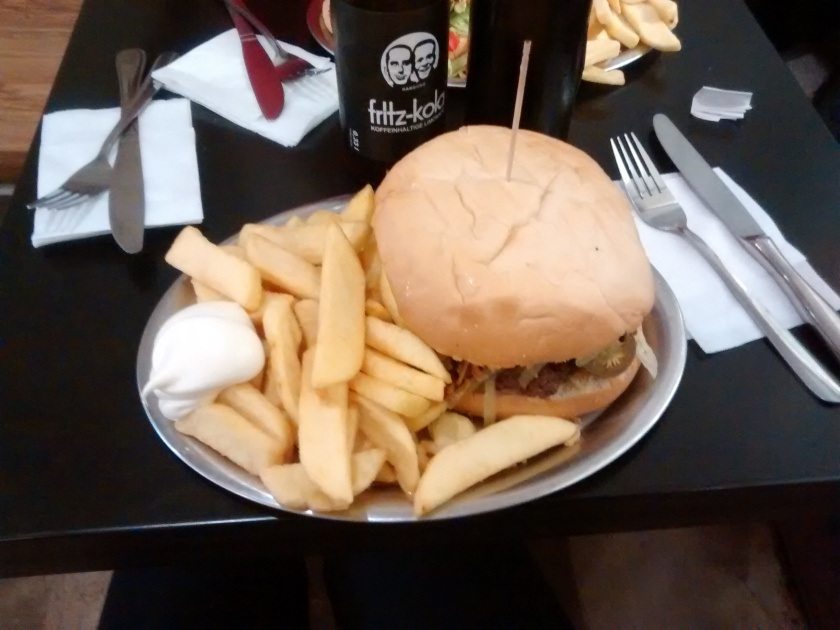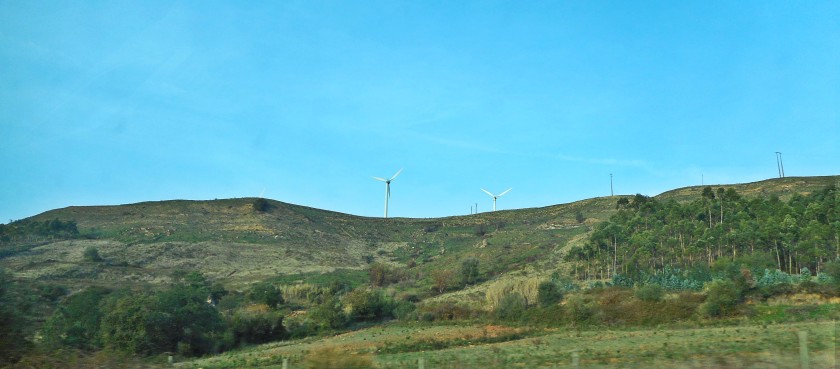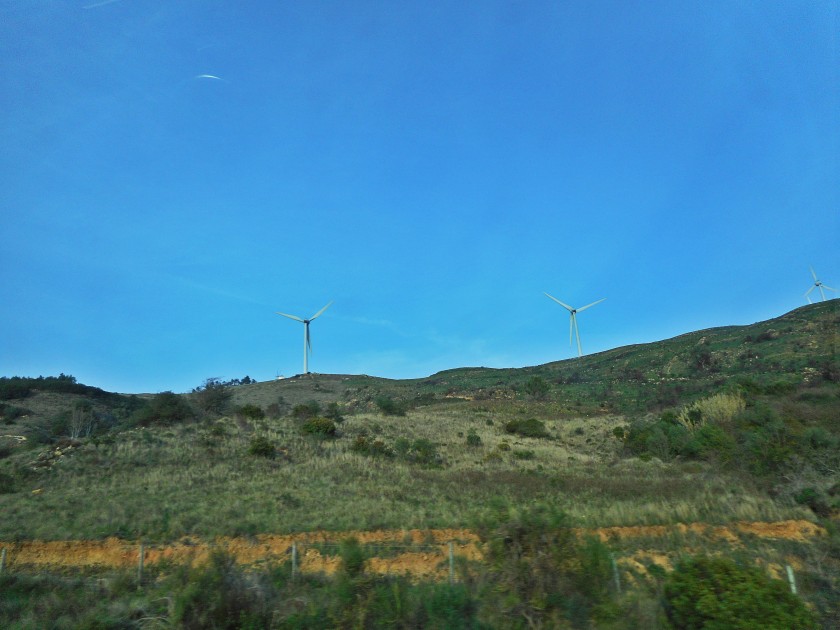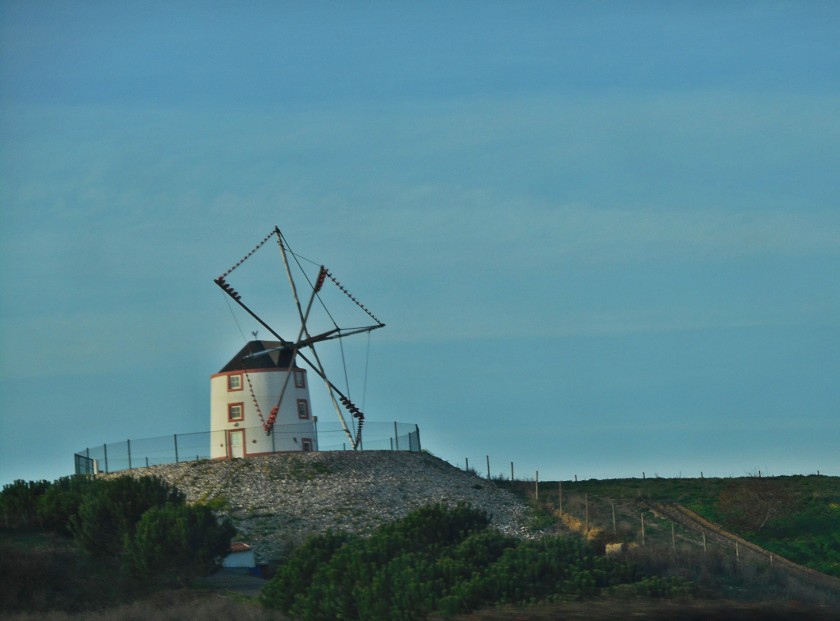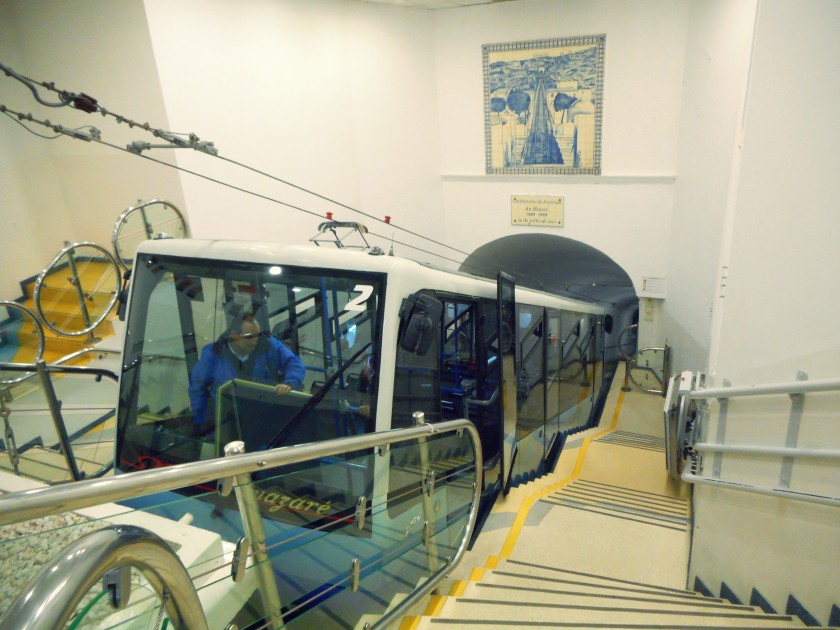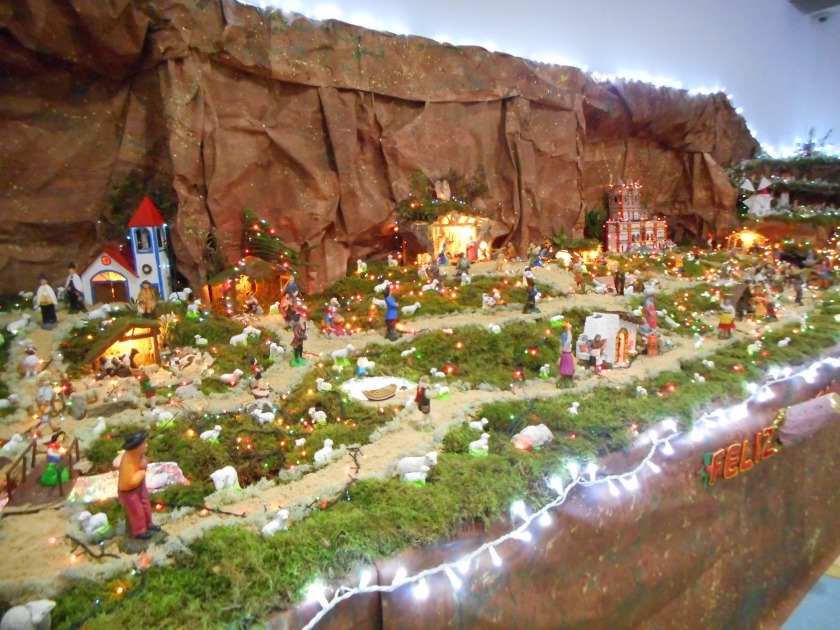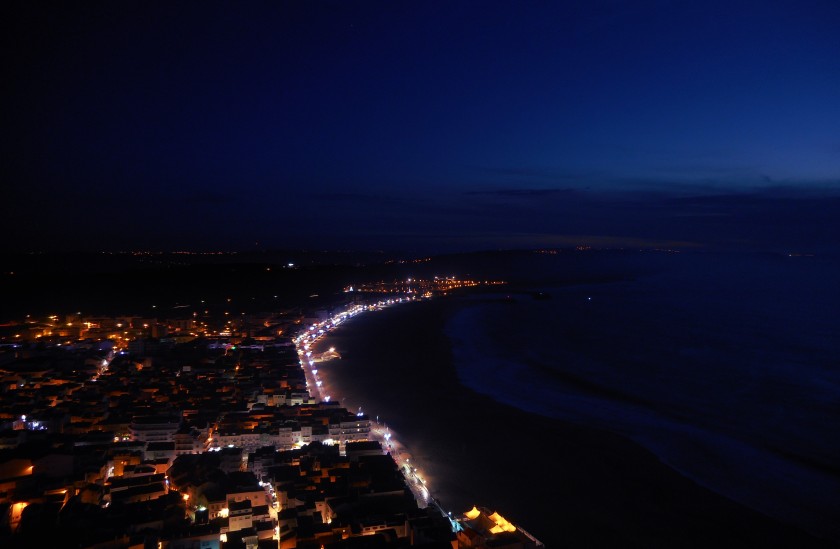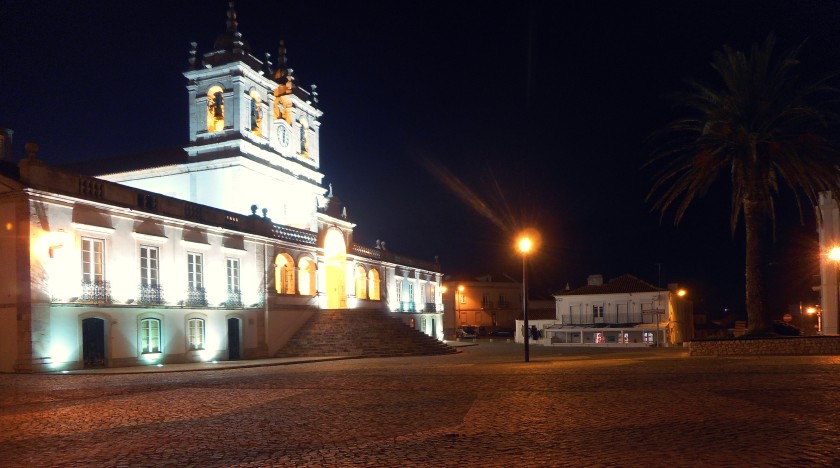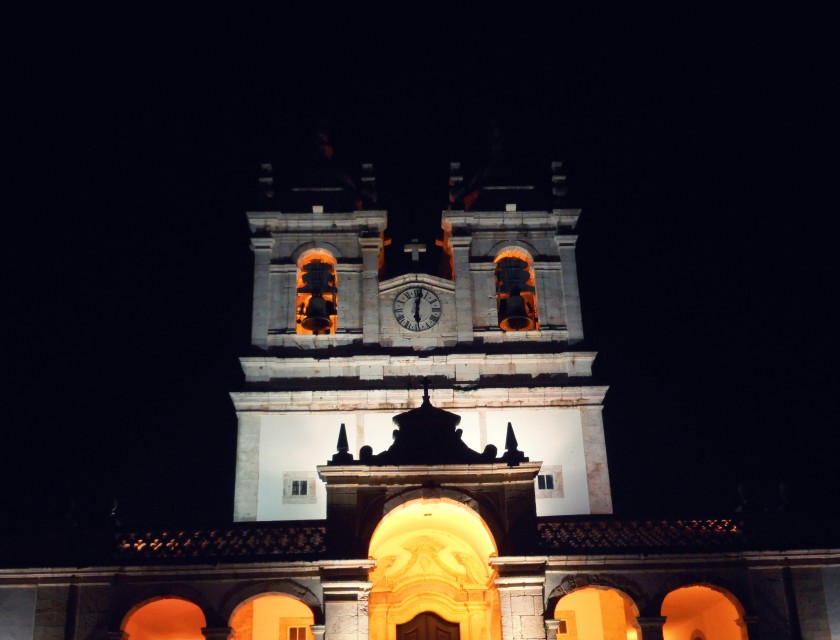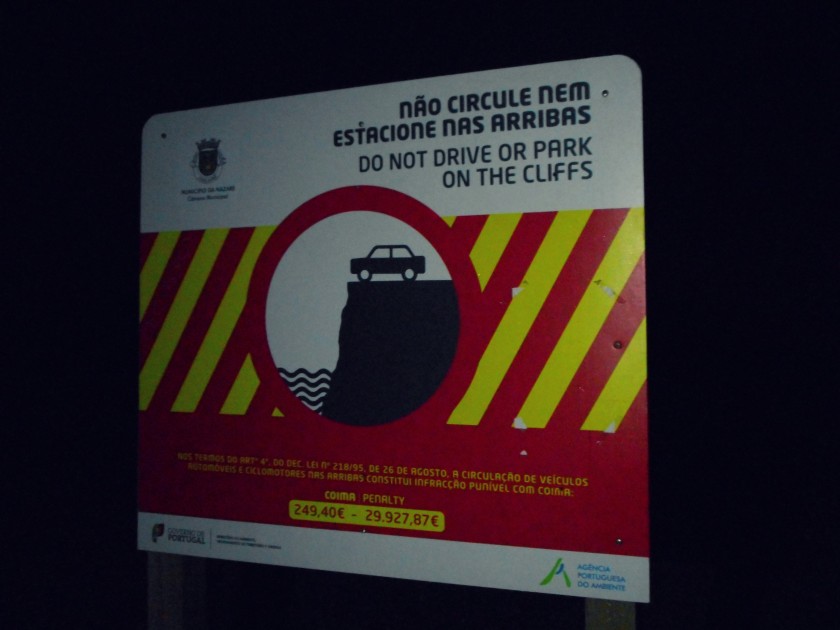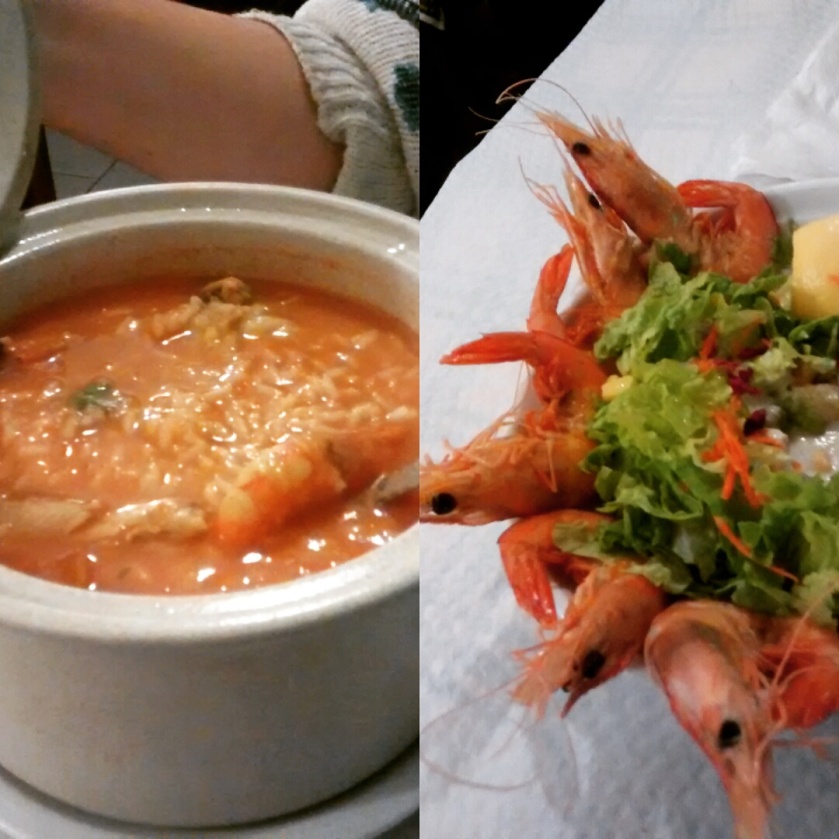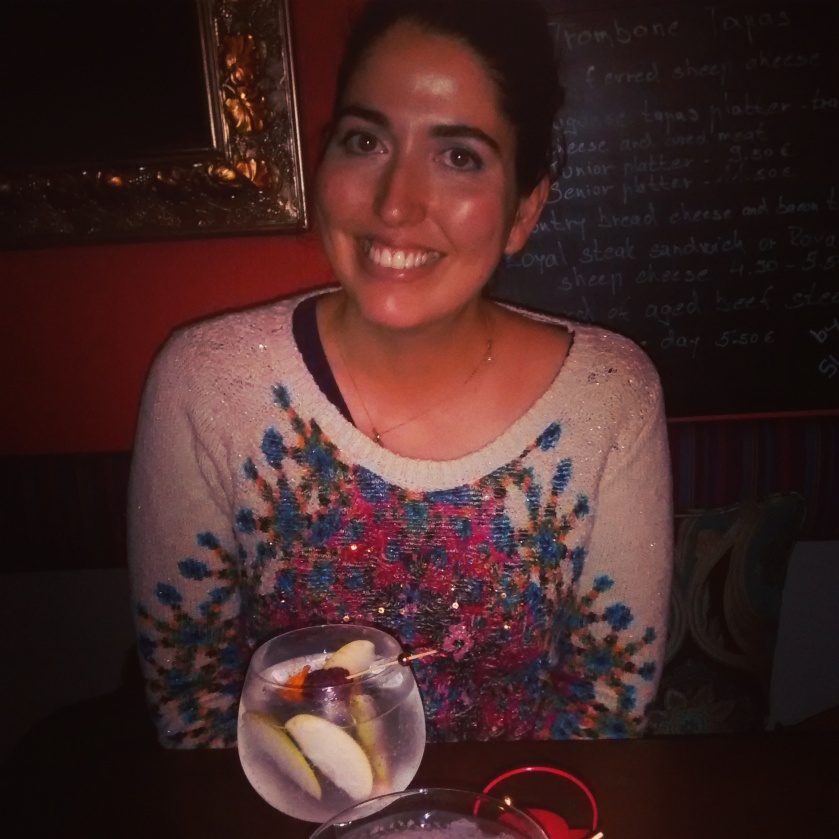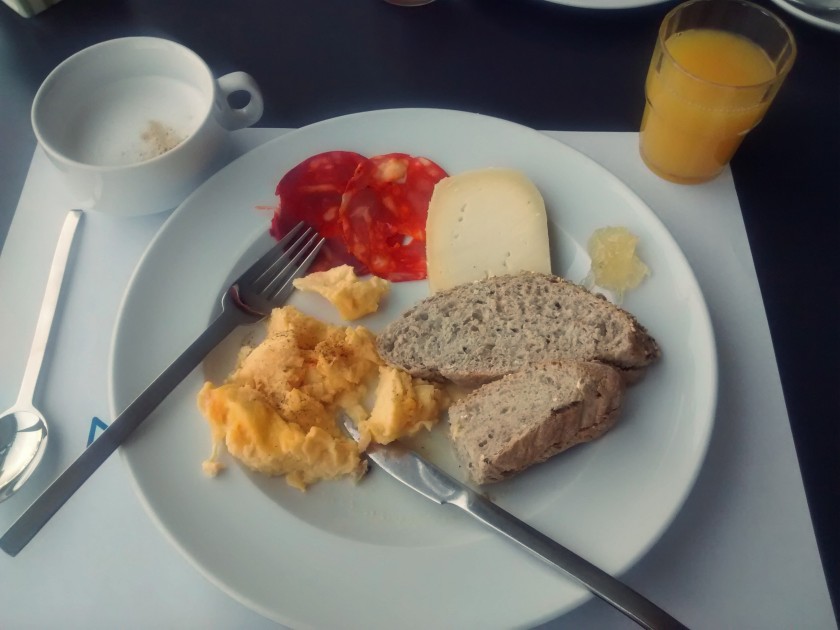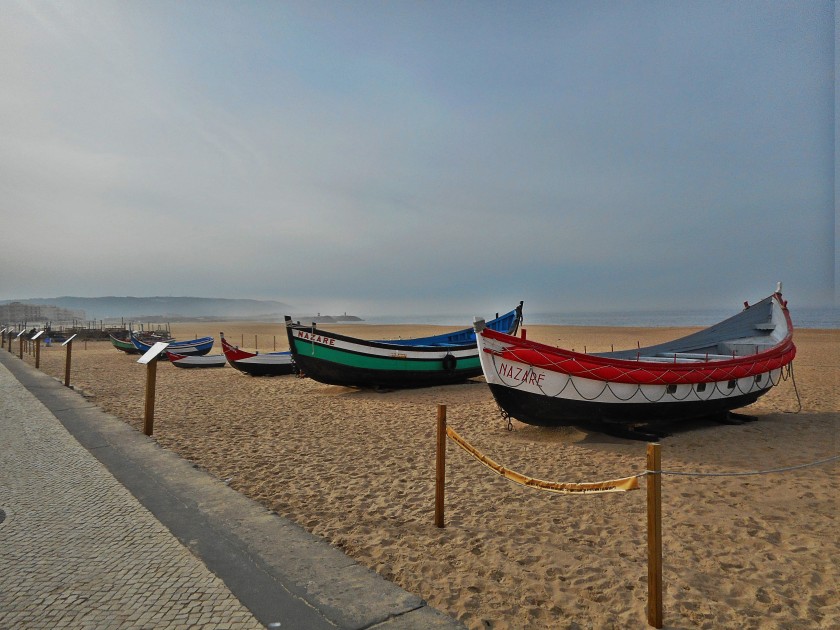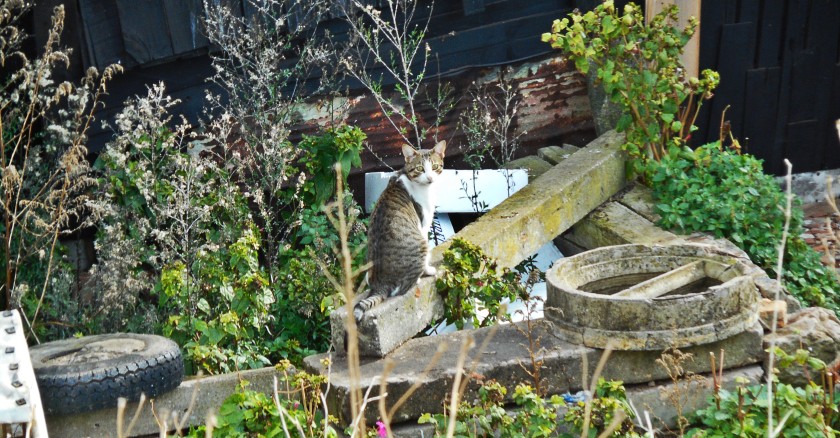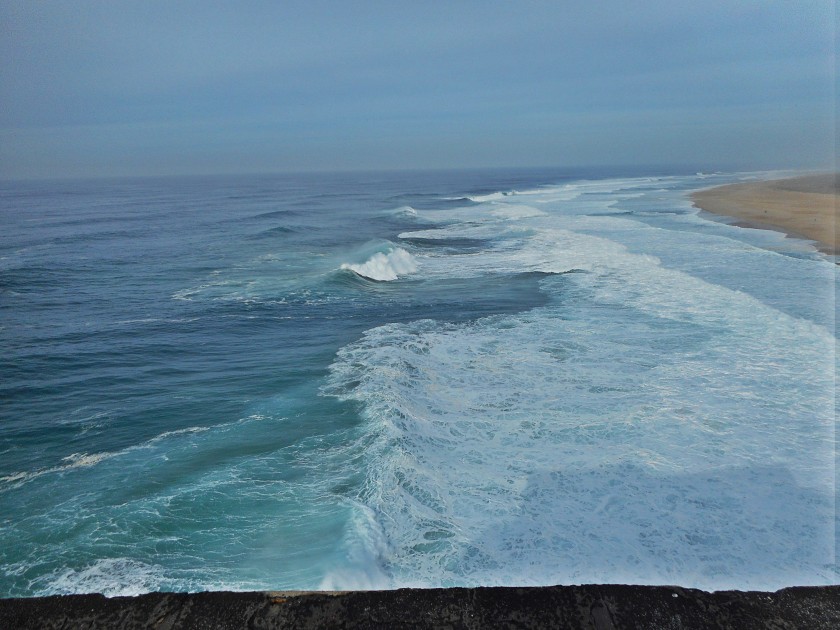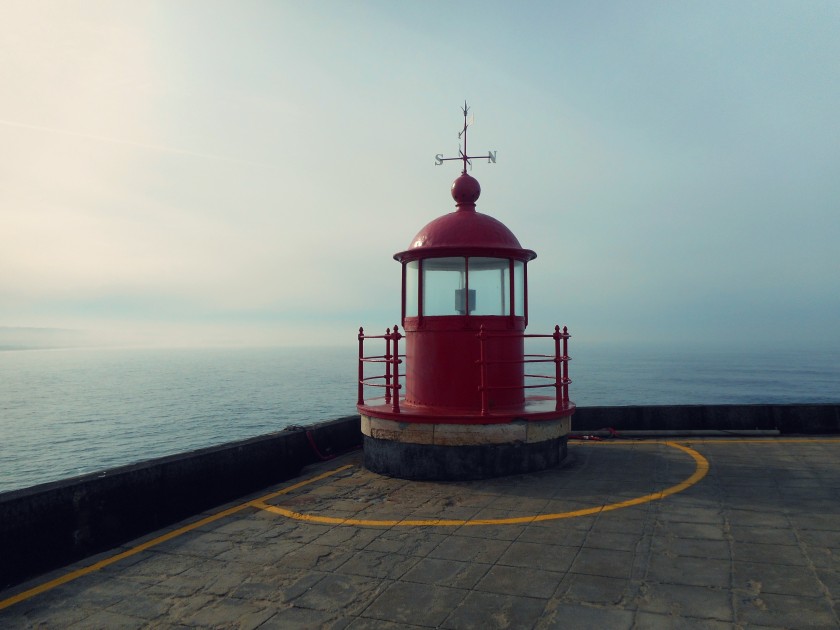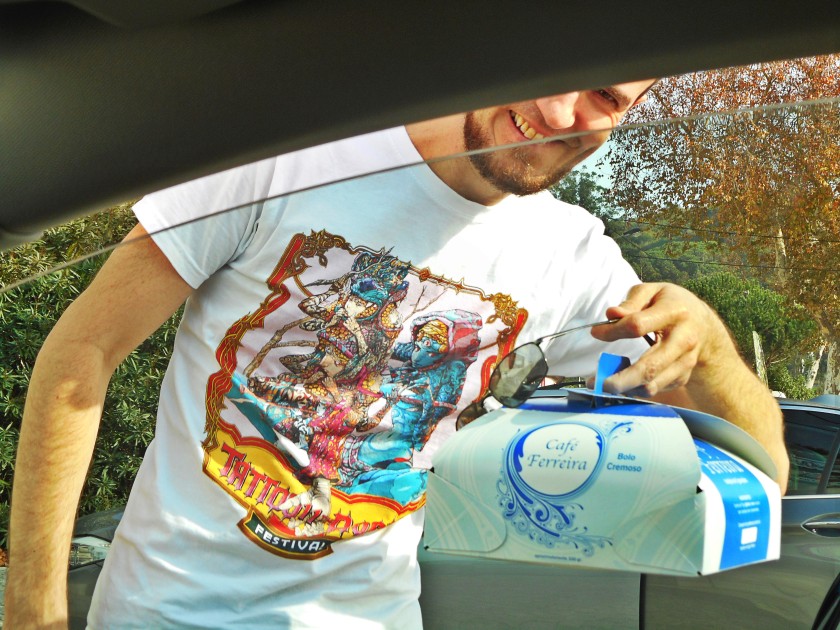It’s taken an age to write this blog up, what with my fledgling fiction career kicking off and planning my wedding (this September!). But here we are. It was late February. A late Carneval this year and it couldn’t come soon enough. As ever, we had a precious long weekend, and so we decided to make the best of it. The plan was a road trip to Sagres, in the Algarve, and then to drive back up the Alentejo coast, with a stopover in Vila Nova de Milfontes.

Despite being the end of winter, we were lucky enough to wake up to a bright, sunny day and so we jumped into my girlfriend’s car and hit the highway. It being a holiday weekend, there was a fair amount of traffic, but nothing too drastic and, some hour or so after crossing the 25th April bridge, we were a little peckish, stopping off in a tiny place in the Alentejo for a bite to eat. We rolled into a tiny village called Castro Verde and walked in what was by then quite blazing sun, to the top of the village and a restaurant called, simply, Castro.
Inside was a wonderfully experience, huge portions of outstanding food, with decent wine to accompany it and very reasonable prices. How I love Alentejo. I ate Carne a Alentejana, a pork steak dish, served with razor clams and, in this restaurant, a huge king prawn. Ana had a steak which was, happily for her, cooked rare. Both were delicious. We finished up with a toucinho do ceu (a heavy egg-based cake, that was a bit too much for me) on the part of my partner and a petit gateau with red fruits and ice cream for me. With wine and coffee, we paid a little under forty euros in total.
There was very little else to see in the town, besides an old building with a particularly interesting wooden tower as part of the architecture. After looking at this, we were back on the road and it was a full two and a half hour slog down to Sagres.
When we arrived in Sagres, it was late afternoon and, at the end of winter, in a place that is so far south, the sun was already setting. Luckily, that meant a spectacular sunset out over the ocean. Sagres’ location, at the southwestern most point of the country means that there is only perhaps 75 kilometres between you and the northern tip of Africa. Too far to see, but the water rolls away, seemingly forever, from the horizon. The Pousada (a traditional hotel network from the early twentieth century) is wonderfully located, right on the rocky cliffs. They’ve also made an effort to keep artificial light to a minimum, making for spectacular sunsets and starlight. The pousada itself is the long, low, white building, featured in many of the photographs.
After freshening up and a bit of a walk on the cliffs, it was time to go and find dinner. The only problem with visiting Sagres – really a small town, relative to its Algarvian neighbours, Lagos, Faro, etc – in the winter, is that many restaurants were closed. We hunted down a few which came recommended, only to find the lights out. Eventually, we stopped at a place called Restaurant Carlos, where we had a really excellent seafood rice to share, packed with crab, lobster prawns, clams and muscles and a refreshing bottle of white wine to wash it down with. This place was a little more expensive, but food and service were both excellent. After the meal we were given a complimentary shot of local acorn liqueur. I’m not sure I’d try it again, but it was an experience!

Breakfast in the morning, at the Pousada was excellent, with homemade jams, cakes and more alongside the usual variety of international hot food, pastries, cereals and fruit. The coffee was also good, graças a Deus. I have no pictures, though. After breakfast it was a quick shower and then quite the agenda for the day. First was to explore Sagres and, specifically, the old fortress (fortaleza). We walked through the small town for about twenty five minutes to find the fort and the facade is highly impressive the moment you arrive. There is a huge space out the back with a lighthouse, rocky outcrops here and there which are dominated by local fishermen trying their luck and a small chapel, dedicated to ‘our lady of the sea.’
The fort is very cheap to enter and I hugely recommend it. There’s one more interesting thing to be found inside, which is a musical instrument, played by the sea. There are porous caves underneath the peninsula on which the fort and its territory stands so, using the force with which the tide pushes air through the rock, a channel was made a and huge wind instrument was built. You walk inside via a maze like path and then stand over a grate, where a low pitched, thunderous tone blasts you from below. The wind, as well as the sound, is quite something. Take a look at the video, below.
From here, it was back in the car to visit Cabo de Sao Vicente (Cape St Vincent). It is the westernmost point of continental Europe and was a place where the Romans once thought you could sail off the edge of the flat earth and into oblivion. There isn’t much there other than a lighthouse, but the views up the coast into the Alentejo – our next destination – were more than worth it.
After a quick stop to look at some hand crafts, it was back on the coastal road, up to Vila Nova de Milfontes. There were no stops on the way, besides one to allow a farmer to march his cattle across the road. An hour and a bit later we were rolling into Vila Nova de Milfontes where we would stay for the night. We decided to explore the town a little, before dinner. The town is situated on the banks of the river Mira, immediately before it washes out into the Atlantic. The result is that there are beautiful river beaches, as well as a dramatic ocean beach, where the freshwater meets the ocean, sometimes violently. We stayed at the hotel Mil Reis, a small but immaculately kept town house B&B, right in the heart of the town. Our room was one of the smaller ones, but we didn’t plan to spend too much time indoors, so it was fine. We stopped in another local restaurant, where we ordered fresh seafood. In my case, fried monkfish and for Ana a seafood açorda, a dish with old bread, mashed up with vinegar, coriander and seafood. It tastes a lot better than it sounds.
The next morning, with better light, we decided to drive around the to headland you can see in the dark photo, to take a look at the beach. The tide was coming in as we strolled along, the speed of it nearly catching us out, so we had to dash back across and climb back to the cliffs. The force of the ocean coming in to the beach was really something to behold.
After our little beach trip, it was time to head home, but on the way, we had decided to stop at two places, the first of which was Ilha do Pessegueiro (Peach tree island). This is a place with great views, a lovely beach and the island itself, facing another, smaller sandstone fort. It’s a place so famous that there was even a song written about it. When we arrived though, a storm was brewing and seemed to have stationed itself directly over the island. It made for quite a dramatic effect. On the shore, next to the fortress, there are great slabs of volcanic rock from a time long ago in the past, with trenches carved into them. Whether these are man made or natural, I have no idea, but they certainly added to the impression the place made on me.
After a short time walking here, we were back in the car and up to our last stop before heading home to Lisbon – Porto Covo. I’d heard it was a beautiful place but I wasn’t prepared for the dramatic ocean that we would find there. We arrived some twenty minutes after leaving peach tree island and decided the first priority was lunch. We passed a few restaurants and decided to opt for Restaurante Zé Inácio. We were not disappointed.
We started off with some razor clams ‘à Bulhão Pato’ – it literally means quarrelsom duck, but that has nothing to do with it. They are served in a sauce of olive oil, garlic and coriander and, when they’re fresh like these were, it just works. For main courses we had some really outstanding steak, with excellent side dishes. As Ana was driving, she drank a coke, while I had a half carafe of local red wine (which was delicious). We both had dessert and coffee and the total cost was a measly forty-five euros, all included. We left the restaurant very happy.

After lunch, it was time to go down to the sea. And what a sight it was. The town of Porto Covo itself is typical of its seaside location. There are the white and blue buildings, the wide, sea facing streets and the cafés, restaurants and boat hire places you’d expect. But the cliffs and the rushing ocean you see when you reach the seafront, you don’t expect. I’ll let the pictures and video speak for themselves.

After watching the ocean for half an hour, with the sun almost down, it was time to hit the motorway and head home.
This is a trip that comes highly recommended from me. It took us three days, but you could probably relax a little more, if you had a bit more time.
If you are interested in exploring Portugal or specifically the Algarve or Alentejo regions, I heartily recommend the guide books linked below. Any purchases made here will kick back a few cents to me for my next trip. Thanks in advance and happy travelling!

